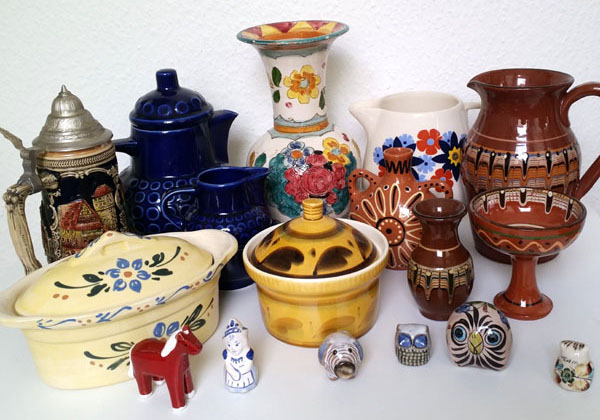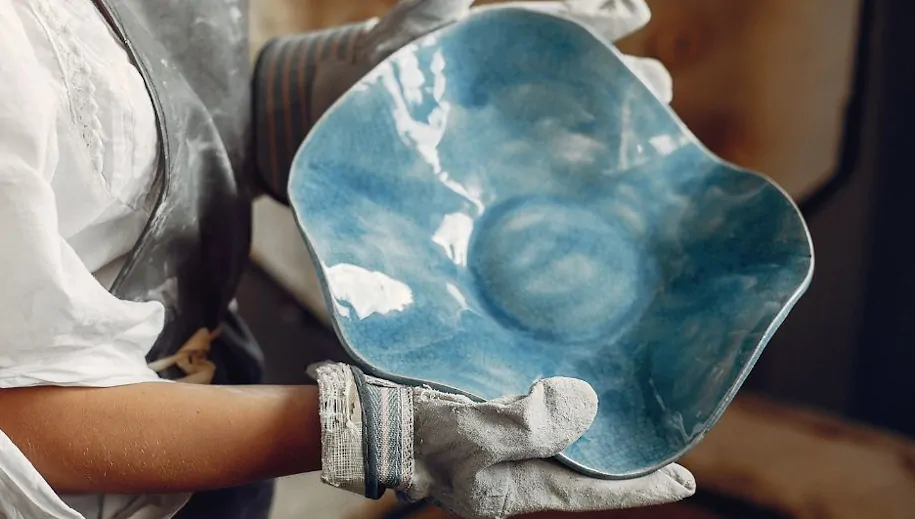Essential Pre-Cleaning Checks
Always prioritize caution before cleaning vintage stoneware. Examine the piece meticulously under strong light. Look for existing cracks, chips, glaze crazing (fine web-like cracks), or areas where the glaze might be flaking or unstable. Check if any painted decorations, decals, or gold/silver gilding are present. Pieces with significant damage, unstable glaze, or valuable decoration may require professional conservation.
Initial Dry Cleaning Methods
Start with the gentlest approach. Remove loose dirt and debris without water.
- Soft Bristle Brushes: Use a clean, very soft natural bristle brush (like a horsehair brush) or a soft artist's brush. Gently whisk away dust and loose particles.
- Microfiber Cloths: Gently wipe surfaces. Avoid paper towels or abrasive cloths that can scratch.
- Compressed Air: Canister type, not compressor-driven. Use short bursts to dislodge dust from crevices and crazing lines. Hold the can upright.
Gentle Wet Washing Techniques
If dry cleaning is insufficient, proceed with extreme caution using water.

- Minimal Warm Water: Use lukewarm (never hot) water. Fill a basin, don't run water directly onto potentially fragile pieces.
- Mild Dish Soap: A tiny amount of phosphate-free, unscented dish soap or liquid Castile soap. Avoid heavily perfumed detergents.
- Soft Cloth or Sponge: Use a non-abrasive sponge or microfiber cloth. Test the cleaning action on an inconspicuous spot first.
- Dip & Dab: Lightly dip a clean cloth/sponge in the soapy water and dab stains/grimed areas gently. Do not vigorously scrub. Rinse immediately using a separate basin or sponge/cloth dipped in clean water. Minimize soaking time.
Addressing Stubborn Grime
If gentle washing fails, consider slightly stronger, controlled methods.
- Clay Poultice: Mix kaolin or fuller's earth clay powder with distilled water to form a thick paste. Apply thickly only to stained/grime-encrusted areas (avoid crazing, unstable glaze, decorations). Allow it to dry completely (hours to overnight). The clay draws impurities upwards. Brush off carefully with a soft, dry brush.
- Denture Tablets: For tough interior stains (NOT on crazing or unstable glaze). Dissolve one tablet in a small amount of lukewarm water. Place the stoneware upside down in a basin, filling ONLY the stained interior with the solution (protect the exterior). Soak for 15-30 minutes max. Rinse thoroughly.
Targeting Specific Stains (Use with Extreme Care)
Mineral Deposits/Limescale: White vinegar (dilute 1:1 with water) can sometimes be used carefully on stoneware glaze only if stable and uncrazed. Apply very briefly with a cotton swab to ONLY the stained spot. Rinse immediately and thoroughly. Never use on porous surfaces or crazing.
Organic Stains: Hydrogen peroxide (3%) dabbed briefly on the stain can help. Rinse immediately. Test first. Avoid chlorine bleach entirely.
Drying and Storage
Pat the piece gently with an absorbent towel. Air dry completely upside down or on its side in a well-ventilated, room-temperature area away from direct heat or sun. Ensure absolutely no moisture remains in crevices or inside porous clay bodies before storing. Store in a stable, dry environment with even temperature.
Absolute Avoidances
- Dishwashers & Boiling Water: Thermal shock will cause cracking.
- Harsh Chemicals: Oven cleaners, drain cleaners, muriatic acid, scouring powders, chlorine bleach. Destroy glazes and clay.
- Abrasive Tools: Steel wool, harsh scrub pads, knives. Scratch glazes irreparably.
- Excessive Soaking: Water weakens clay and seeps into crazing/defects, potentially causing salt efflorescence or structural issues later.
- Pressure Washers/Scalding Water: Guaranteed damage.
When in doubt, consult a professional conservator specializing in ceramics.













